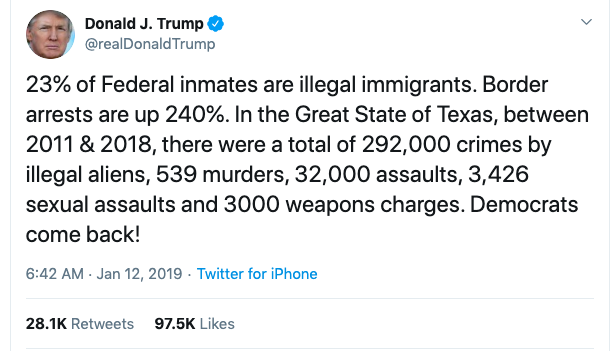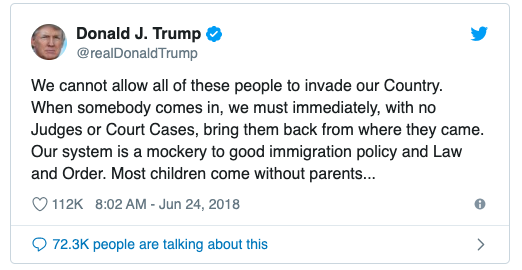Invitational Rhetoric Benefits Everyone
- fionadelaney12
- Oct 13, 2019
- 11 min read
This blog post will examine Sonja K. Foss and Cindy L. Griffin’s theory of invitational rhetoric, and how it is effective and how it can be used to analyze a rhetorical artifact, as well as produce meaning from this analysis.
With a suppressive patriarchy that not only enforced inequality as a standard social norm, but also took away the ability of choice from women and others, Foss and Griffin created an alternative form of rhetoric that was rooted in the feminist ideals of equality, immanent value, and self-determination. They called it invitational rhetoric. They loosely define invitational rhetoric in the sentences below:

(Foss and Griffin 5). In other words, invitational rhetoric - as it sounds - is an invitation to the audience to hear the perspective of the rhetor rather than trying to persuade them of the rhetor’s perspective. This perspective itself is also open; it is not judgemental or critical, nor does it assert that it’s a superior one. While doing this, the rhetor is also trying to respect and appreciate the perspectives of the audience as well. In turn, the audience members can thus also share their perspectives, putting them on the same level as the rhetor.
One of the main points of invitational rhetoric is that its purpose is not to be persuasive. Foss and Griffin argued that “viewing rhetoric only as persuasive leads to theoretical practice that devalues the lives, experiences and knowledge level of the audience member” (Foss and Griffin 4). They believed that persuasion belittled the audience in the sense that they were perceived as inferior.
Foss and Griffin also say that change is not the purpose of their rhetoric either, but can happen by the audience’s choice from gaining new insights from the open discussion. They say that forcing others to change is equal to domination, a characteristic of the patriarchy. Foss and Griffin explain that

(Foss and Griffin p 3). By thinking the goal of rhetoric is to change others, the rhetor is placed in a dominant position that makes audience members’ perspectives unvalued or flawed compared to the rhetor’s.
Presenting invitational rhetoric as not having a goal of persuasion or change makes the theory about the idea of the choice of the audience; the choice to listen, how to respond or act, and understand the rhetor. Borchers and Hundley describe invitational rhetoric in terms of choice, saying that it “focuses on the choices that audience members make and the idea that rhetors should create situations in which audience members are free to make choices about what they hear and read” (Borchers and Hundely 220). They are not persuaded to make one choice, but encouraged to think about the different perspectives and base their choice on their knowledge and other’s shared knowledge. In this way, invitational rhetoric seeks to establish a better relationship between rhetor and audience that is built on the principles of the rhetorical theory itself (equality, immanent value, and self-determination). The rhetor also realizes that not all of the audience will accept or respond to the message.
Borchers and Hundley say that the invitational speaker has two primary objectives in mind: offering perspectives and creating “external conditions that allow others to present their perspectives in an atmosphere of respect and equality” (Foss and Griffin 7). In other words, the rhetor must create an atmosphere where the audience feels that their perspective can not only be shared but will be listened to and respected as equally as others.
When offering perspectives, the invitational rhetor should not be trying to gain support or acceptance of their perspectives. One way in which a rhetor might do this is through narrative. For example, they can share their perspective through a story, saying that this is what they have experienced, but also acknowledge that not everyone has the same experience with said topic.
In order to create an open atmosphere, the audience needs to feel comfortable enough to share their perspectives. This comfort involves safety, value, and freedom. The safety of the atmosphere created by the rhetor makes the audience feel that their perspectives “will be received with respect and care” (Borchers and Hundley 220). To achieve value, “the speaker allows each person to feel like they are a unique individual” (Borchers and Hundley 220). Lastly, freedom is realized when “audience members can develop and choose options from the alternatives suggested by the speaker...the audience member does not feel pressure to accept the speaker’s ideas” (Borchers and Hundley 221). For example, to ensure freedom within the atmosphere, the speaker may offer various solutions that approach a problem in different ways, and even adds that there are more solutions besides the ones they have spoken on.
Overall, the purpose of invitational rhetoric is to not only create an understanding of the issue or topic being spoken on, but “an understanding of the participants themselves occurs, an understanding that engenders appreciation, value, and a sense of equality” (Foss and Griffin 5). Through this rhetorical theory, rhetors and audiences alike can learn how to treat and value other perspectives equally. This allows perspectives that are usually marginalized by traditional dominant rhetoric to have a voice in the manner.
Now, some of you may be thinking “Well that’s nice and all, but what does that accomplish? How can it be effective?”.
One way in which invitational rhetoric can be effective is that it can allow for an easier discourse within a community. For example, in the United States today, the political parties are so polarized that political leaders as well as followers don’t even bother trying to listen or understand the other’s argument, since most of the time, they’re attacking each other. They’re pointing out the wrongs of each other’s beliefs - without trying to understand them - and not even explaining the good of their own. A painfully great example of this is the following clip from the presidential debates in 2016 between current President Donald Trump and politician Hillary Clinton:
It's two excruciating minutes of hurling insults and neglecting perspectives of the other rhetor; actual politics aren't even discussed because of this.
Invitational rhetoric can at least open up a stage for discussion by creating an atmosphere where beliefs and solutions can be shared; ideas can be put on the table with equal respect, and talked about with equal respect.
An open atmosphere that allows a healthy discourse gives the opportunity for various perspectives to flourish, not only supporting the audience but supporting the speaker as they are intrigued by new perspectives they can consider in the future. If one feels valued, they will most likely want to at least try to value the other. If the rhetor values various perspectives, it can encourage the audience to do the same, and create an atmosphere in which productive discourse can take place, rather than argument. Through its principles, invitational rhetoric prevents immediate condemnation of whether perspectives are right or wrong. Imagine how much more congress would get done with considering everyone as their equal in value and respect. If they understood each other, maybe they would know how to work with each other.
Although Foss and Griffin claim that invitational rhetoric does not have the sole purpose persuasion, in a way it is persuasive as it persuades the audience to listen to and respect the rhetor in the first place. When referring to persuasion, the two authors were speaking of the violent persuasion where one idea is the best and where the rhetor felt that the audience needed to be conquered. However, invitational rhetoric in itself can be persuasive as it establishes a better relationship with the audience where audience members can be persuaded by their respect to listen, and potentially be on the lookout to hear out the rhetor again.
An invitation also makes the audience feel respected and valued as individuals with their own different experiences and perspectives, and not just some audience that is being targeted solely to persuade them. Invitational rhetoric has the rhetor talking with audience members, not down on them. In this way, invitational rhetoric can be productive by having everyone partake in a discussion. Talking down or having the audience feel that they are only there to be persuaded can make them skeptical as they don’t feel valued or they feel that they’re being used.
Lastly, traditionally marginalized audience members, such as women or minorities, get to play a role on the stage of rhetoric. With invitational rhetoric, they are no longer suppressed by patriarchal-dominant rhetoric but given a chance to espouse their perspectives with an accepting and respectful atmosphere. Their voices would not be brushed aside by the majority, such as Trump with the immigration crisis, who depicts immigrants as criminals while ignoring their perspectives on the situation. Trump espouses his perspective aggressively in the following tweets:
Illegal immigrants - or"these people" to Trump - are criminals, inmates, murderers, sexual assaulters, and invaders. He is trying to persuade the American people that illegal immigrants are bad, even terrible, through dominant rhetoric that shuts down other perspectives (oh, by the way, the statistics in the first tweet are wrong, as you can read here).
Overall, invitational rhetoric can yield to a better and more productive discourse between people through its feminist principles that allow people to feel valued and understood by others, which empowers audience members, especially traditionally marginalized ones.
The specific example/rhetorical artifact I wanted to analyze using the theory of invitational rhetoric is a Billie razor advertisement (ad) called “Project Body Hair”. The ad starts off saying that yes, women have body hair, in various places - and they actually show it, using various body types - unlike other shaving or any kind of commercial in the beauty industry. They even call out the rest of the world for acting like women’s body hair doesn’t exist. The video goes on to show women of various races and body shapes shave different parts of their body from their legs, stomach, toes, and so on. They end the ad by saying “However - whenever - if ever - you want to shave, we’ll be here."
In this ad, Billie is inviting women to the idea of shaving; they are not saying that shaving your body is the dominant or correct perspective. They admit and show that not all women shave, and if they do, they all don’t shave the same. By showing various perspectives on shaving, they are not trying to persuade their audience to shave, nor trying to change the audience's perspectives of shaving. They are simply saying some women shave, some don’t, and if you do, Billie is there, as an option. Their ending words highlight this notion:
The fact that they also put this phrase at the end emphasizes the choice Billie's audience has.
The Billie ad focuses on the shaving choices women make and relays an atmosphere that shows you are free to shave whenever, however, or if ever. It respects and values the different perspectives of shaving, and gives them various choices. Billie creates a better relationship with their audience by showing that shaving is an option, unlike other shaving commercials where it glamorizes it and makes it a social expectation. They establish a better relationship also by being honest and accepting, visibly showing the hair women have all around their body, normalizing it for once. Billie is not forcing a perspective nor trying to dominate their audience. Here are some of the following images of body hair they use:
The ad offers various perspectives that include the different races (African American, Asian, white), body types (small to large, tattooed, cellulite, hairy), and places where hair grows (toes, belly, vagina, legs, armpits). While offering perspectives, the ad utilizes the narratives of the women. Their story on how, what, where, or if they shave create a comfortable atmosphere where women watching the commercial can feel that their
perspective on shaving is appreciated because
it’s being celebrated and valued.
Even the girl just shaving the open spots in her jeans is a narrative that a lot of teens can relate to, and thus feel that their struggles are being valued. One commenter notes that -

This specific audience member feels that their perspective has been appreciated.
The safety and value of the ad comes from the various perspectives they demonstrate within the ad, and how they receive each perspective with respect and understanding. They show respect for all of these perspectives by featuring them in the commercial as normal and celebrating the fact that women have the power to shave however and whenever they want. Billie creates the freedom of choice by showing the different ways women shave, and the fact that they have the choice to not shave as well, and that’s ok. Billie does not criticize any way of shaving or if people don’t shave.
This ad also encourages women to be comfortable with their hair, acknowledging that it exists and that’s ok, and it’s also ok if you don’t want to shave it either. It is telling girls and women around the world you’re in control, it’s your choice to shave! We’re just here if you want to. Billie is celebrating the power of choice, which invitational rhetoric wants to create for their audience. This comfortable atmosphere also allows for women to feel that if their perspective hasn’t been portrayed, they can present it and it will be accepted with respect and equality with other perspectives.
Looking at the comment section can show just how much the audience feels like their perspectives are being valued, understood and appreciated; the comments praise the fact that they offer different, realistic views on shaving. For example, the following screenshot below is the top comment on the post:

This commenter appreciates that Billie is giving a choice, making her feel that her and other people’s perspectives are being valued.
The video also shows women grooming their body hair in ways besides shaving, such as when a girl brushes through her armpit hair in the photo below. This is another way Billie is trying to normalize body hair. This normalization attacks patriarchal social norms and expectations and gives women an atmosphere in which they control their body hair. And they don’t just say that body hair exists, they show it, front and center. Another commenter notes that -

This commenter feels that they and other women are being respected since the ad visibly shows people shaving actual hair, and the different parts in which it can grow. “It’s sad how rare this type of ad is” also shows how they are acknowledging and appreciating that Billie is trying to normalize women body hair.
The invitational rhetoric framework shows how Billie, despite its existence adding to the social norm of shaving, is trying to challenge this norm, and thus creating a productive discourse. They show that there is no right way to shave, whether it is what you shave, how you shave, or if you shave, empowering women who are normally marginalized by patriarchal beauty expectations by giving showing various choices and respecting them. By inviting their audience to use the product when or if they please, they create a productive discourse that demonstrates that any woman's choice in dealing with her body hair should be normal and accepted.
Another meaning to consider is how Billie shows that they are evolving unlike some parts of society that don’t acknowledge body hair in the first place. This ad is creating an open discourse about women’s body hair that empowers them and gives them the choice to be in charge of their body instead of the social expectations of shaving being dominant. They are encouraging the rest of society to respect these perspectives and partake in the understanding of this discourse. This example of invitational rhetoric is allowing for patriarchal, sexist social norms to be challenged, creating a more productive discourse in which multiple perspectives of shaving can finally be accepted and valued equally.
Works Cited
Borchers, Timothy and Heather Hundley. Rhetorical Theory: An Introduction. 2nd ed., Waveland Press, Inc., 2018, pp. 220–221.
Foss, Sonja K, and Cindy L. Griffin. “Beyond Persuasion: A Proposal for Invitational Rhetoric.” Communication Monographs, 62.1, Mar. 1995, pp. 2-7.
“Donald Trump vs. Hillary Clinton: The Most Brutal Moments Of The Final Presidential Debate.” Youtube, uploaded by TIME, 20 October 2016, https://www.youtube.com/watch?v=vxA-9I4huzU.
“Project Body Hair by Billie.” Youtube, uploaded by Billie, 26 June 2018, https://www.youtube.com/watch?v=P4DDpS685iI.
@realDonaldTrump. "23% of Federal inmates are illegal immigrants. Border arrests are up 240%. In the Great State of Texas, between 2011 & 2018, there were a total of 292,000 crimes..." Twitter, 12 Jan. 2019, 6:42 a.m., https://twitter.com/realDonaldTrump/status/1084098258534891521.
@realDonaldTrump. "So disgraceful that a person illegally in our country killed @Colts linebacker Edwin Jackson. This is just one of many such preventable tragedies. We must get the Dems..." Twitter, 6 Feb. 2018, 5:32 a.m., https://twitter.com/realDonaldTrump/status/960868920428253184?ref_src=twsrc%5Etfw.
@realDonaldTrump. "We cannot allow all of these people to invade our Country. When somebody comes in, we must immediately, with no Judges or Court Cases, bring them back..." Twitter, 24 Jun. 2018, 8:02 a.m., https://twitter.com/realDonaldTrump/status/1010900865602019329? ref_src=twsrc%5Etfw%7Ctwcamp%5Etweetembed%7Ctwterm%5E1010900865602019329&ref_url=https%3A%2F%2Fwww.axios.com%2Ftrump-tweets-illegal-immigrants-deported-immediately-no-court-cases-judges-f214c25e-282e-464c-a706-be02146d5e7c.html.
































Comments